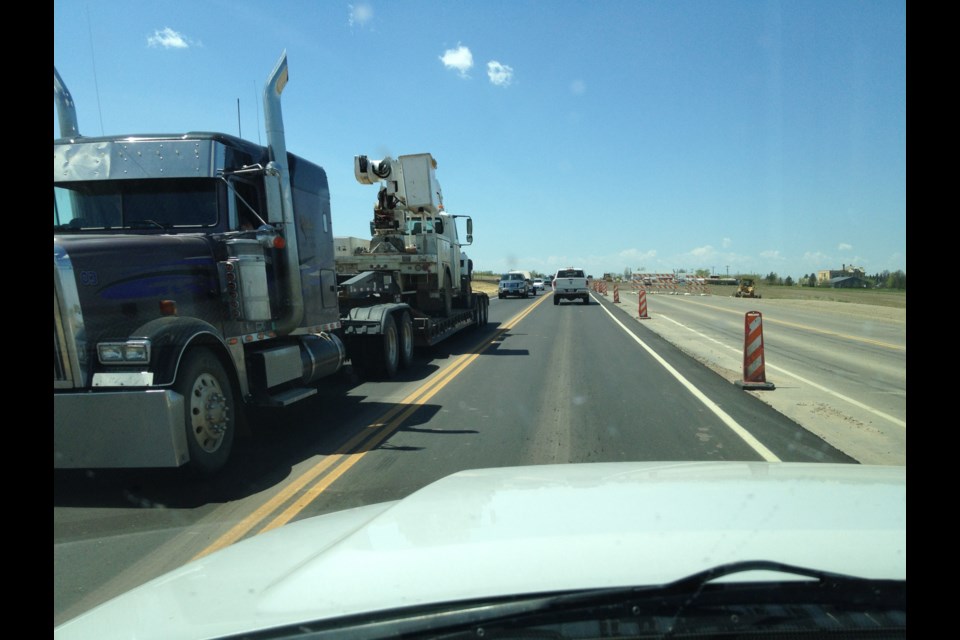Williston, N.D.  – Perhaps the starkest contrast for Williston, N.D., in 2014 to today, is the extreme decline in traffic on U.S. Route 85, which, in 2014, I was told was referred to by the locals as “The Gauntlet.”
I have seen the boom. This was the bust.
Here’s an excerpt from my 2014 story:
This route is a substantial part of the fairway of the Bakken play in North Dakota, with Williston not only СŔ¶ĘÓƵ the epicentre, literally and figuratively, but also the service centre in much the way Lloydminster or Estevan are. However, if you took all the oilfield businesses (and the activity that goes with it) in Lloydminster, Estevan, Weyburn, Carlyle, Carnduff and Swift Current and threw them into one town, I doubt you would equal what is going on around Williston.
Whereas Saskatchewan in 2011 hit an active drilling rig count of 122 rigs, North Dakota has been running around 190 rigs almost continuously for over two years, dropping from a high of over 210. And unlike Saskatchewan, they don’t really shut down for spring breakup, either. So imagine not only the number of rigs, but the support services like lease building, battery construction, flowline pipelines, fracking, everything, concentrated primarily out of Williston, Watford City, Newtown and Stanley. The vast majority of it is in Williston. Now take a very large chunk of that traffic and put it on one road.
That’s driving The Gauntlet. I’ve never seen anything like it. It was like Deerfoot Trail in Calgary, except over half of the vehicles were semis, many carrying wide loads, and the road is only two lanes.
It was bumper to winch to beavertails to pushbar traffic. Every so often you’d get someone who thought they could fight their way through it, weaving and passing.
This year, going to the Williston Basin Petroleum Conference in Bismarck on May 23 was a totally different experience. Except for some road construction north of Williston and a new “twinned” bridge under construction, it was a leisurely drive where I could use cruise control most of the way.
My last trip was the most white-knuckled experience of my driving career, and that includes some nasty blizzards.
For my wife, this was the first time she had been down this route. She didn’t seem to understand how crazy it was in 2014, until I showed her the pictures from that year.
From Crosby, N.D., to Dickenson, N.D., we did not see one drilling rig in the field. Not one! Two years ago, there were 190 rigs working in North Dakota. On this day, there were 27 (the lowest it has been since July 2005), and they were all huddled in the very core of the Bakken play, closer to Stanley, N.D. Instead of seeing numerous derricks doting the horizon in all directions, there were just two, both in yards in Williston.
We didn’t see one rig move, saw only one service rig on the road, a few tankers, and next to no crew trucks or frac spreads on the go.
Back in 2014 North Dakota was frantically expanding Route 85, adding two lanes on the outside of the existing road. This was in contrast to “twinning,” in Saskatchewan, where a whole new highway is built adjacent to the existing road, with a median in between. The road construction added to the profound chaos which was The Gauntlet.
Indeed, for this trip I set up a GoPro on the dashboard and did a time lapse video from downtown Williston to the badlands south of Watford City. Watching the clip, you would think there were hardly any other vehicles on the road. The last time I drove that road in 2014, I took my life in my hands every time I pulled onto it. If I had done the same two years ago, it would have shown bumper to bumper traffic in both directions the entire trip. You can see the video on YouTube at .
The bypass around the north and west sides of Williston is also now complete, taking an enormous amount of traffic out of the city proper. It actually seemed like a normal city, if not a small town, instead of a gong show. An intersection on the west side of town that took over half an hour to clear before now took seconds.
What we did see were yards full of equipment everywhere. Frac pumpers, Rotoflex jacks, tankers, crew trucks; you name it, it was parked. The “man camps” all along the highway had next to no vehicles in them. Campgrounds, once chock full, were less than half full.
They appeared to be the very definition of “standstill.”




